Introduction to Fantastic Foliage Plants : Choose a great indoor plant for your home
Foliage plants have always been a popular choice for garden enthusiasts and plant lovers alike. With their stunning leaves and unique appearances, these leafy lovelies can easily transform any space into a lush, inviting oasis. In this article, we’ll delve into the wonderful world of foliage plants, explore their benefits, and provide tips on choosing and caring for the perfect leafy companion for your home or garden.
Why Indoor Foliage Plants are Important
Aesthetic Appeal
Foliage plants add depth, texture, and color to any space. Whether you’re looking to create a tropical paradise, a woodland wonderland, or a contemporary urban retreat, these versatile plants can help you achieve your desired look with ease. From delicate ferns to bold calatheas, there’s a foliage plant to suit every style.
Health Benefits
In addition to their visual appeal, foliage plants have been proven to improve indoor air quality by filtering out harmful pollutants and releasing oxygen. They can also help reduce stress, boost productivity, and promote an overall sense of well-being.
Environmental Impact
By absorbing carbon dioxide and releasing oxygen, foliage plants play a crucial role in mitigating climate change. They also provide habitat and food for various pollinators and wildlife, contributing to a healthy ecosystem.
Choosing the Right Foliage House Plants for Your Space
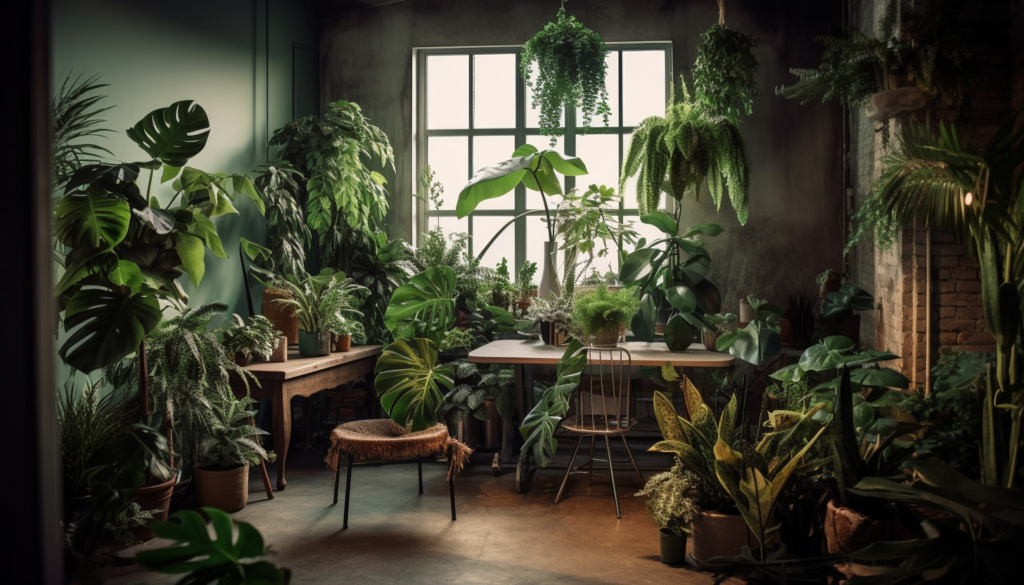
Light Requirements
Before selecting a foliage plant, consider the amount of light your space receives. Some plants, like calatheas, thrive in low light conditions, while others, such as coleus, need bright, indirect light to flourish.
Water Needs
Different foliage plants have varying water requirements. It’s essential to understand the specific needs of your chosen plant to ensure its health and longevity. Overwatering can lead to root rot, while underwatering can cause wilting and leaf loss.
Soil Preferences
Types of Soil
Foliage plants can have specific soil preferences, depending on their natural habitat. Most plants do well in well-draining soil, but some may require a more specialized mix. Research your chosen plant’s needs to ensure you provide the best possible growing conditions.
Soil pH
The pH level of the soil can impact the health and appearance of your foliage house plants. Some plants, like heucheras, prefer slightly acidic soil, while others may thrive in neutral or alkaline conditions. Be sure to test your soil’s pH and amend it as necessary to suit the preferences of your chosen foliage plants.
Top Foliage house Plants to Consider
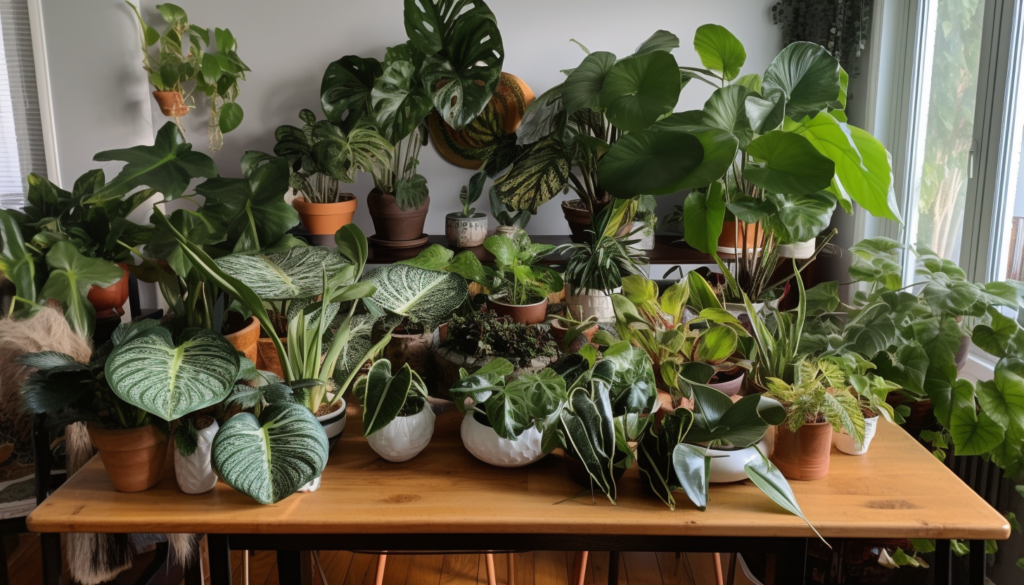
Calathea
Known for their striking leaf patterns, calatheas make a stunning addition to any indoor or outdoor space. These tropical plants prefer low to medium light and consistently moist soil.

Coleus
Coleus plants offer a kaleidoscope of colors and patterns, making them a popular choice for adding visual interest to your garden or home. They thrive in bright, indirect light and well-draining soil.

Heuchera
Heucheras, also known as coral bells, boast a wide range of foliage colors, from vibrant greens to deep purples. They prefer partial shade and slightly acidic, well-draining soil.
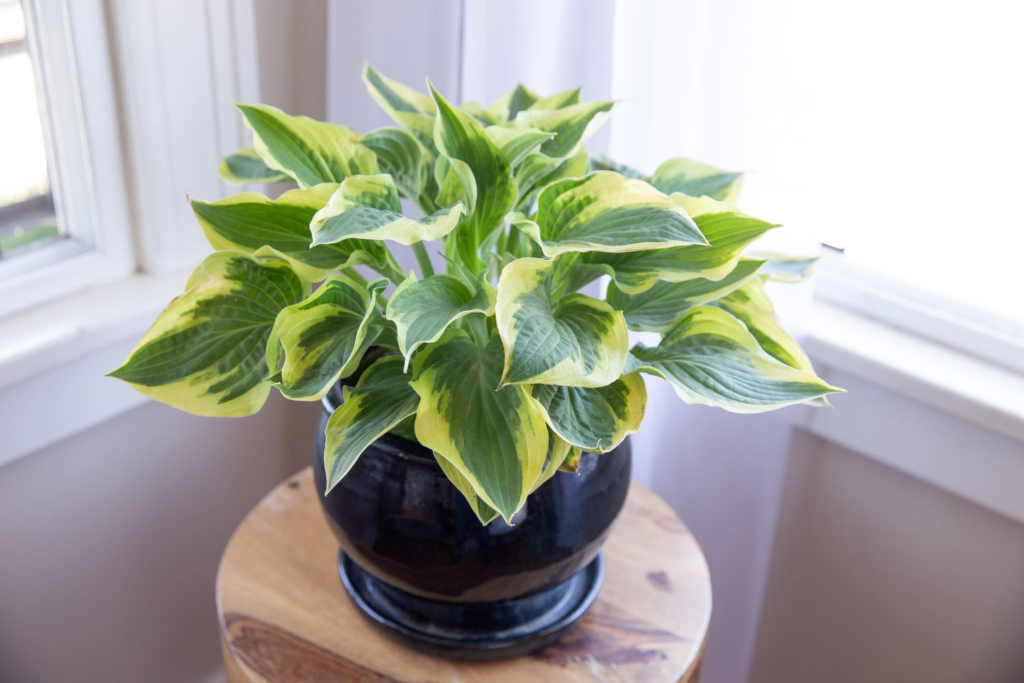
Hosta
Hostas are shade-loving perennials with large, lush leaves that come in various shades of green, blue, and yellow. They do well in moist, well-draining soil and can tolerate a wide range of soil pH levels.
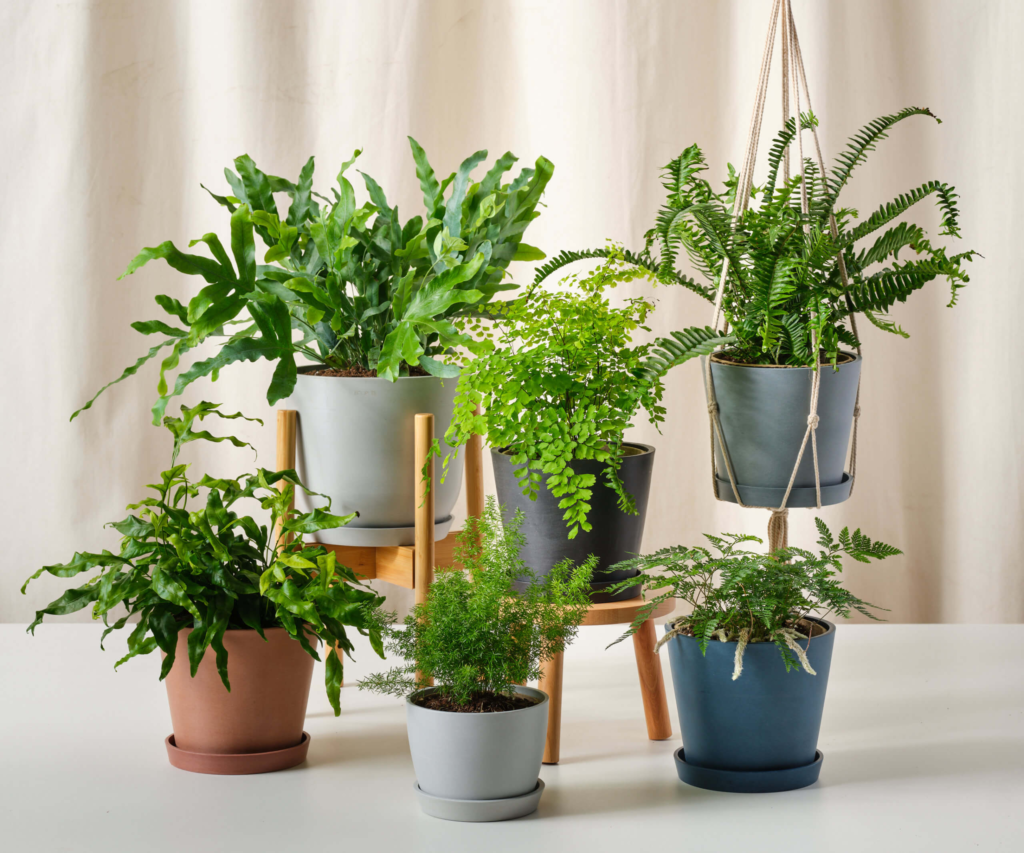
Ferns
Ferns are a classic choice for adding texture and softness to your garden or indoor space. With their delicate, feathery fronds, they prefer dappled shade and consistently moist soil.
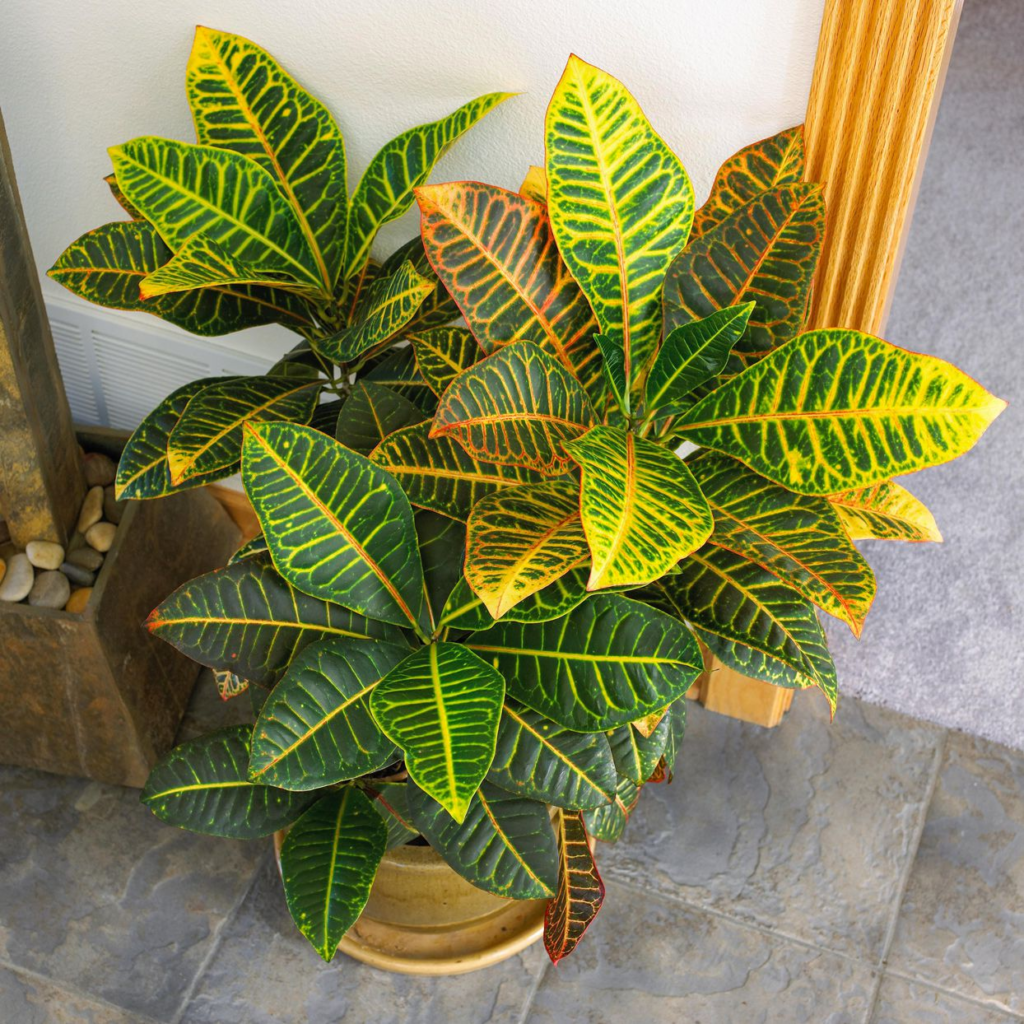
Croton
Crotons are tropical plants with brightly colored, variegated leaves in shades of red, orange, yellow, and green. They prefer bright, indirect light and well-draining soil.
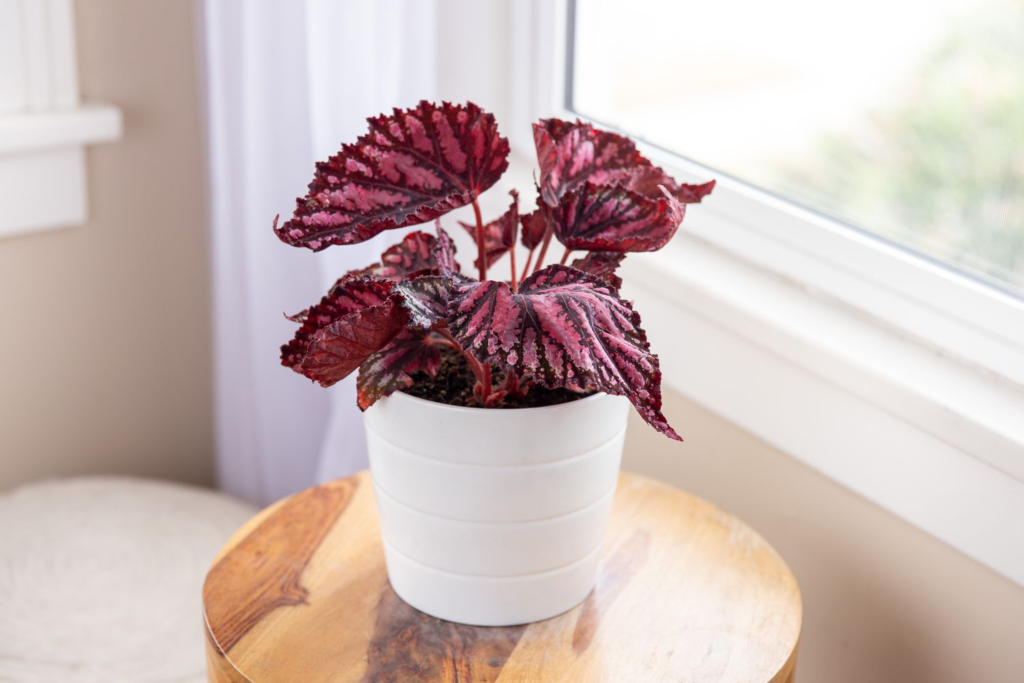
Rex Begonia
Rex begonias have stunning, textured leaves in shades of pink, purple, silver, and green. They prefer bright, indirect light and consistently moist soil.

Snake Plant
Snake plants, also known as mother-in-law’s tongue, are hardy plants with tall, upright leaves in shades of green and yellow. They prefer bright, indirect light and well-draining soil.

Elephant Ear
Elephant ear plants have large, heart-shaped leaves that come in various shades of green and burgundy. They prefer partial shade and consistently moist soil.
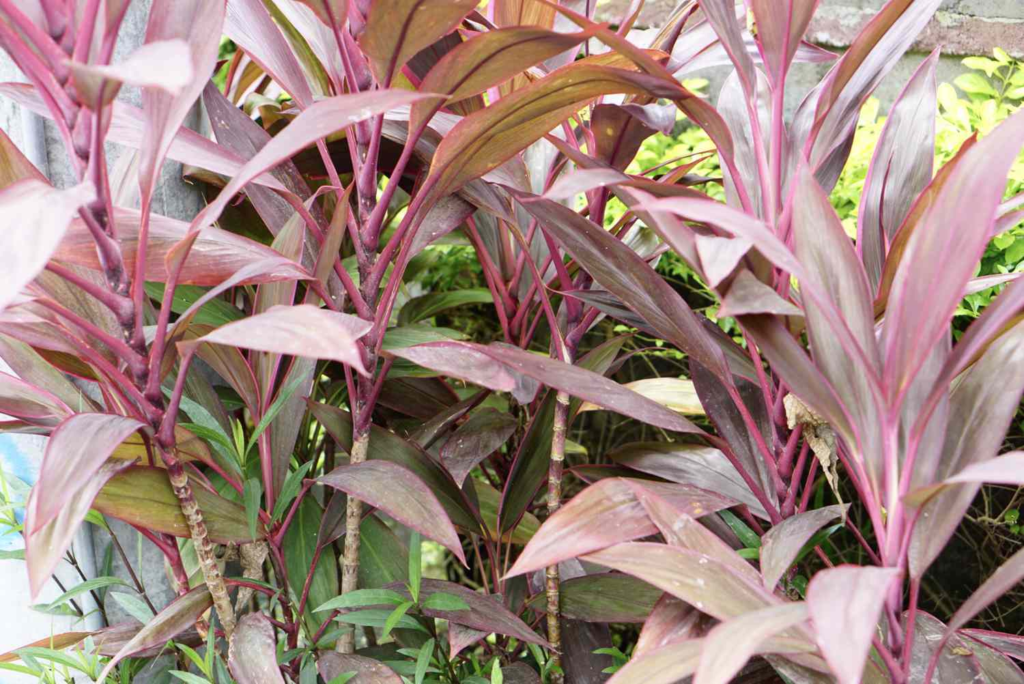
Ti Plant
Ti plants, also known as Cordyline, are tropical plants with tall, slender leaves in shades of pink, purple, red, and green. They prefer bright, indirect light and well-draining soil.

Variegated Rubber Plant
Variegated rubber plants have shiny, oval-shaped leaves with a unique marbled pattern of green and cream. They prefer bright, indirect light and well-draining soil.

Prayer Plant
Prayer plants have uniquely shaped leaves with striking patterns of green, red, and silver. They get their name from the way their leaves fold up at night, resembling hands in prayer. They prefer low to medium light and consistently moist soil.

Chinese Evergreen
evergreens have glossy, patterned leaves in shades of green, silver, and red. They are known for their ability to thrive in low-light conditions, making them a great choice for offices or other indoor spaces with minimal natural light.
Caring for Your Foliage Indoor Plants

Foliage indoor plants are a great way to add a touch of nature and color to your home or office. With the right care and maintenance, they can thrive and enhance your indoor space. Here are some tips to help you care for your foliage indoor plants:
Light and Water
Different foliage plants have varying light and water requirements, so it’s important to research the specific needs of each plant. Some plants prefer bright, indirect light, while others thrive in low-light conditions. Similarly, some plants prefer consistently moist soil, while others prefer to dry out between waterings. Make sure to adjust your watering and light schedule accordingly.
Pruning and Trimming
Regular pruning and trimming of your foliage indoor plants can help maintain their shape, encourage healthy growth, and remove any damaged or diseased leaves. Be sure to use clean, sharp tools to avoid damaging your plants or introducing harmful pathogens. Additionally, you can use pruning and trimming to control the size of your plant and prevent it from becoming too large for your indoor space.
Pest Management
Foliage indoor plants can be susceptible to pests like aphids, spider mites, and mealybugs. Keep an eye out for any signs of infestation, such as sticky leaves, webbing, or discoloration, and treat them promptly using organic methods, like insecticidal soap or neem oil, to avoid harming your plants or the environment. Regularly inspecting your plants can help catch any pest problems before they become severe.
Fertilizing
Providing your foliage indoor plants with the proper nutrients is essential for healthy growth and vibrant colors. Use a balanced, slow-release fertilizer formulated specifically for foliage indoor plants, and follow the manufacturer’s instructions for application rates and frequency. Over-fertilizing can be harmful to your plants, so it’s important to use the right amount.
Repotting
As your foliage indoor plants grow, they may need to be repotted to accommodate their expanding roots. Signs that your plant needs to be repotted include roots growing through the drainage holes, the soil drying out quickly, or the plant becoming top-heavy. Repot your plant in a container that is slightly larger than the current one, using fresh soil and ensuring that the plant is not buried too deep.
By following these tips and providing your foliage indoor plants with the proper care and maintenance, you can enjoy their beauty and benefits for years to come. Remember to research the specific needs of each plant, and adjust your care routine accordingly. Happy indoor gardening!
Issues that Foliage house Plants Usually Face and How to Avoid and Handle Them

While this indoor plant can be a stunning addition to any indoor or outdoor space, they can also face a variety of issues that can affect their health and appearance. Here are some common issues that foliage plants face and how to avoid and handle them:
Overwatering
Overwatering is a common issue that can lead to root rot, yellowing leaves, and even plant death. To avoid overwatering, make sure to research the specific watering needs of your foliage plant and adjust your watering schedule accordingly. Avoid watering your plant too frequently or allowing it to sit in water, as this can lead to stagnant water that can promote root rot. To handle overwatering, remove any excess water from the soil and cut back on watering until the plant has had a chance to recover.
Underwatering
Underwatering can cause your foliage plant to become dehydrated and wilted, and can also lead to brown or yellow leaves. To avoid underwatering, make sure to research the specific watering needs of your foliage plant and adjust your watering schedule accordingly. Make sure to water your plant thoroughly when you do water it, ensuring that the soil is moist all the way through. To handle underwatering, give your plant a thorough watering and make sure to adjust your watering schedule to prevent it from happening again.
Pests
Foliage plants can be susceptible to pests like spider mites, mealybugs, and aphids. To avoid pest infestations, regularly inspect your plants for any signs of infestation, such as webbing, sticky leaves, or discoloration. Keep your plants clean and free of debris, as this can help prevent pests from taking hold. To handle pest infestations, treat your plant promptly using organic methods, such as insecticidal soap or neem oil. Be sure to follow the instructions carefully to avoid harming your plant or the environment.
Diseases
Foliage plants can be susceptible to diseases like powdery mildew and leaf spot. To avoid diseases, make sure to provide your plant with proper care and maintenance, including regular watering, fertilizing, and pruning. Avoid overwatering or allowing water to sit on the leaves, as this can promote fungal growth. To handle diseases, remove any infected leaves and treat your plant with a fungicide if necessary. Make sure to follow the instructions carefully to avoid harming your plant or the environment.
Nutrient Deficiencies
Foliage plants can also suffer from nutrient deficiencies, which can cause yellowing leaves or stunted growth. To avoid nutrient deficiencies, make sure to fertilize your plant regularly with a balanced, slow-release fertilizer formulated specifically for foliage plants. Follow the instructions carefully to avoid over-fertilizing, which can be harmful to your plant. To handle nutrient deficiencies, adjust your fertilization schedule or switch to a different fertilizer that provides the missing nutrients.
By being aware of these common issues and providing your foliage plants with proper care and maintenance, you can help prevent these issues from occurring and handle them promptly if they do. Remember to research the specific needs of each plant, and adjust your care routine accordingly. Happy gardening!
Conclusion
Foliage plants can transform any space into a lush, inviting retreat, offering visual appeal, health benefits, and environmental advantages. By understanding their unique requirements and providing the proper care, you can enjoy a thriving collection of leafy lovelies for years to come.
FAQs
1. Can I grow foliage plants in containers?
Yes, many foliage plants do well in containers, making them a versatile option for patios, balconies, or indoor spaces. Be sure to select a container with adequate drainage and use a well-draining potting mix.
2. How can I propagate foliage plants?
Many foliage plants can be propagated through methods like division, stem cuttings, or leaf cuttings. Research the specific propagation method for your chosen plant to ensure success.
3. Are there any pet-friendly foliage plants?
Yes, some foliage plants, like ferns and calatheas, are considered non-toxic to pets. Always research the specific plant species to ensure its safety for your furry friends.
4. How often should I repot my foliage plants?
Foliage plants typically need to be repotted every 1-2 years or when they outgrow their current container. Signs that your plant may need repotting include roots growing out of the drainage holes or the plant becoming top-heavy and prone to tipping over.
5. Can I grow foliage plants alongside flowering plants?
Yes, foliage plants can make excellent companions for flowering plants, providing contrast in texture and color, and filling in gaps in your garden or container arrangements. Be sure to select foliage plants with similar light, water, and soil requirements as your flowering plants to ensure a harmonious and healthy garden display.
6. What is the foliage plant that is most easy to grow plant ?
It’s difficult to determine the single most easy-to-grow foliage plant, as different plants have different requirements and tolerances. However, some foliage plants that are generally considered to be low-maintenance and easy to grow include:
- Snake Plant (Sansevieria)
- ZZ Plant (Zamioculcas zamiifolia)
- Pothos (Epipremnum aureum)
- Spider Plant (Chlorophytum comosum)
- Cast Iron Plant (Aspidistra elatior)
These plants are known for their resilience and ability to tolerate a range of light and water conditions, making them a great choice for beginner gardeners or those with a busy lifestyle. However, it’s important to note that even low-maintenance plants require proper care and attention to thrive. Make sure to research the specific needs of each plant and adjust your care routine accordingly.